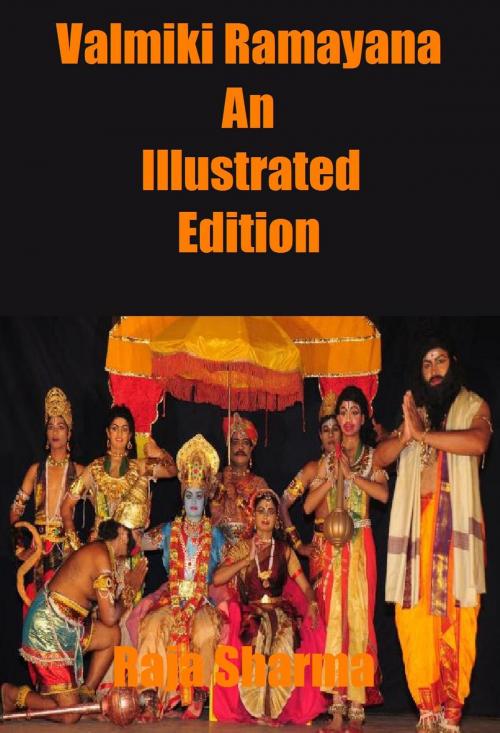Valmiki Ramayana: An Illustrated Edition
Nonfiction, Religion & Spirituality, Eastern Religions, Hinduism| Author: | Raja Sharma | ISBN: | 9781465885357 |
| Publisher: | Raja Sharma | Publication: | November 18, 2011 |
| Imprint: | Smashwords Edition | Language: | English |
| Author: | Raja Sharma |
| ISBN: | 9781465885357 |
| Publisher: | Raja Sharma |
| Publication: | November 18, 2011 |
| Imprint: | Smashwords Edition |
| Language: | English |
It is a firm Hindu belief that Gods take on human forms from time to time to reform the society by their deeds which become firm examples for the people. In wonderful long stories of Ramayana and Mahabharata, the God takes on human form in order to heal a breach in the order of society, and thus the world in general. In the actions of Gods there is a motive to reestablish the moral code of social conduct and proper relation of mankind to divinity.
Most of the tales and folk tales come from these two epics. Ramayana tells the story of Rama, the ideal Hindu man and king, whose wife Sita is abducted by Ravana, the king of Lanka. There is subsequent adventurous journey of Rama to Lanka to conquer the demon king and free his beloved wife Sita from the captivity of the demon king.
These long epics are the combination of educative tales, edifying poems, and fables. It is probably through their constant retelling in the villages over centuries that Hinduism is most efficiently disseminated from generation to generation.
For some very obvious reasons India's beautiful spiritual mythology can constitute a serious obstacle to the Westerner who is developing an interest in Vedanta if he takes this mythology too literally (as many people do). He draws back in amazed disbelief when he discovers that there is no good historical evidence for India's favourite divine incarnations, Rama and Krishna.
A layman from the Western world is further taken aback when he encounters India's many gods; some beautiful, some strange, and some grotesque! He can be so shocked that he may lose interest in India's great spiritual tradition before he has investigated it. What he needs to do is to explore the history and go to the roots to get to the truth, for without knowing the background of each god, he will take them very lightly, perhaps like taking the cartoons from a comic book. But, it is a very serious matter and one must keep in mind that there must have been some solid reasons for the ancient Indians to worship these gods and numerous deities and divine figures.
It is a firm Hindu belief that Gods take on human forms from time to time to reform the society by their deeds which become firm examples for the people. In wonderful long stories of Ramayana and Mahabharata, the God takes on human form in order to heal a breach in the order of society, and thus the world in general. In the actions of Gods there is a motive to reestablish the moral code of social conduct and proper relation of mankind to divinity.
Most of the tales and folk tales come from these two epics. Ramayana tells the story of Rama, the ideal Hindu man and king, whose wife Sita is abducted by Ravana, the king of Lanka. There is subsequent adventurous journey of Rama to Lanka to conquer the demon king and free his beloved wife Sita from the captivity of the demon king.
These long epics are the combination of educative tales, edifying poems, and fables. It is probably through their constant retelling in the villages over centuries that Hinduism is most efficiently disseminated from generation to generation.
For some very obvious reasons India's beautiful spiritual mythology can constitute a serious obstacle to the Westerner who is developing an interest in Vedanta if he takes this mythology too literally (as many people do). He draws back in amazed disbelief when he discovers that there is no good historical evidence for India's favourite divine incarnations, Rama and Krishna.
A layman from the Western world is further taken aback when he encounters India's many gods; some beautiful, some strange, and some grotesque! He can be so shocked that he may lose interest in India's great spiritual tradition before he has investigated it. What he needs to do is to explore the history and go to the roots to get to the truth, for without knowing the background of each god, he will take them very lightly, perhaps like taking the cartoons from a comic book. But, it is a very serious matter and one must keep in mind that there must have been some solid reasons for the ancient Indians to worship these gods and numerous deities and divine figures.















